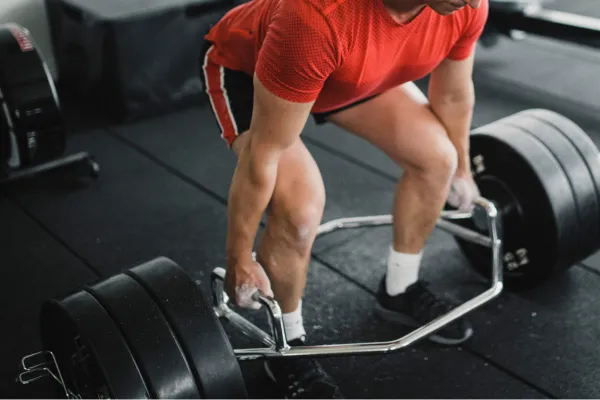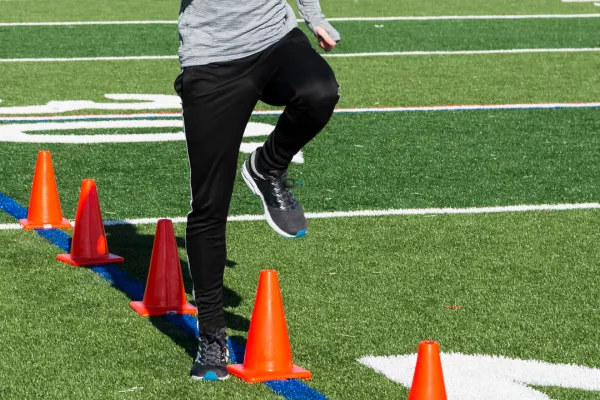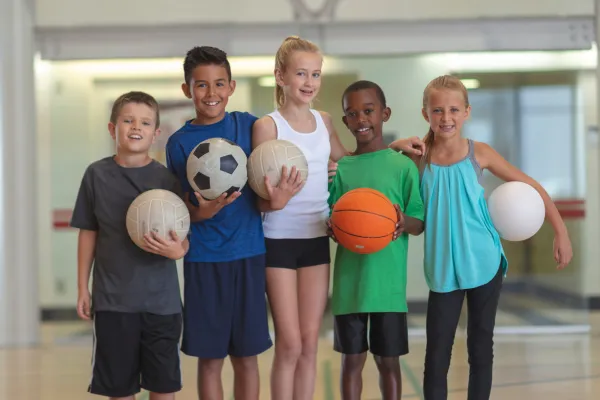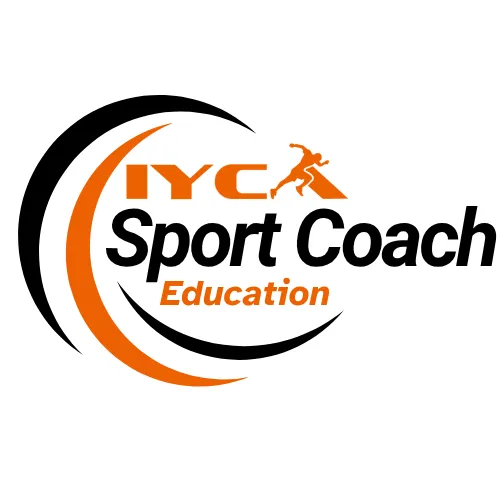
Avoid These Common Missteps in Early Athletic Development
In the current landscape, the pressure to attain instant success in youth sport is more intense than ever. With social media comparisons, fleeting trends, and the race for NIL (Name, Image, Likeness) deals, rapid progress and outpacing the competition have become the ultimate objectives. Parents and coaches, despite their best intentions, can either contribute to or complicate this dynamic. As a result, false narratives have taken root in the athletic world, with many falling prey to shortcuts and gimmicks that promise quick results. In this article we will discuss how to avoid common missteps in youth sport and early athletic development.
While specialized training does have its place in long-term athletic development, an overemphasis on this too soon can narrow an athlete’s focus and cause foundational skills to be neglected, increasing the risk of injury in the long run. It’s important to remember that, while some athletes will go on to play in college or professionally, most will not. As coaches, parents, mentors, and role models, we must keep the bigger picture in mind.
Early Athletic Development Misstep #1: Bypassing the Foundational Stage
Athletes often lack the neurological capacity to handle complex movements, like loading a barbell. More commonly, youth athletes struggle with basic motor skills such as skipping, starting from a two-point stance, or changing direction efficiently. While progressive overload is essential for development, it’s crucial not to overlook the importance of movement efficiency. Teaching young athletes foundational movements—like how to squat, hinge, and pick things up properly—is key.
These foundational skills should be approached creatively so that young athletes not only improve but also enjoy the process. Sometimes, the success in early development comes from teaching them to squat parallel or to move well, rather than just adding more weight to the bar. The goal at this stage should be building a solid foundation for long-term progress. When the foundational movements are taught correctly, and progress is the focus more than perfection the athletes will be less likely to be injured down the road, thus being able to perform more advanced movements.
Early Athletic Development Misstep #2: Over-Drilling, Over-Cueing, and Lack of Creativity
Constantly drilling an athlete with the same technique can quickly drain their energy and enthusiasm, especially if the purpose of the drill isn’t clear. While repetition has its place, it’s important to vary the way fundamental concepts are expressed and taught.
Understanding and applying different training methods to keep athletes engaged is vital. If athletes seem disengaged, turn the drill into a game or a race to inject some excitement and make it more game-relevant. Keep in mind that all athletes develop at different stages, and that every individual is different, so it's important to change the way you coach according to each individual.
When it comes to cues, keep them simple and external. For example, with the hang clean, the cues could be: “Push the floor away,” “Shrug,” and “Elbows high and outside.” These cues are straightforward and easier for athletes to understand compared to more technical instructions like “extend your hips and knees simultaneously.”
Early Athletic Development Misstep #3: Forgetting the Big Picture – Labeling Athletes as “Great” Too Early
Every athlete matures at a different rate, and it’s important for coaches to acknowledge this. Some athletes develop quickly, while others are late bloomers. A key aspect of building a successful athletic culture is to have a clear standard and a progression plan. This ensures that no athlete skips steps just because they’ve had early success in their sport.
When parents push their children too hard at an early age or place undue pressure on them to perform, they may unintentionally hinder their development. Early success can lead to labeling an athlete as “great” before they’ve had the opportunity to grow fully. This emphasis on self-esteem (believing they are good) can overshadow the more important goal of building self-efficacy (believing they have the ability to succeed).
It’s vital to create an environment where athletes understand that the focus is on long-term growth, resilience, and developing their skills at an appropriate pace. By promoting self-efficacy, athletes gain the confidence that they can overcome challenges, which is far more valuable than premature praise.
Conclusion:
When training athletes, it’s crucial to always keep the big picture in mind. Focus on building foundational skills, maintaining a well-rounded approach, and ensuring training remains fun and engaging. This not only helps athletes improve in multiple areas but also gives them a clear understanding of their long-term goals. As a coach, consistently bringing positive energy and enthusiasm will create an environment where athletes can thrive. By doing so, the athletes who trust you and your coaching will look back and appreciate the guidance you provided, both in their athletic journey and in their personal growth.
Read more articles by Coach Brady Hill
The LTAD Model: A Quick Guide for Coaches and Parents
For more information on athletic development, the IYCA Certified Athletic Development Specialist is the gold-standard certification for anyone working with athletes 6-18 years old.
The course materials were created by some of the most experienced and knowledgeable professionals in the industry, and the content is indisputably the most comprehensive of any certification related to athletic development. Learn more about the CADS certification here:

About the Author
Brady’s passion for fitness began as a multisport athlete in high school and grew throughout his collegiate football career at Central College in Pella, Iowa, where he earned all-conference honors as a defensive lineman. His time on the field and in the weight room ignited a drive to help others unlock their potential, inspiring him to pursue a degree in Strength and Conditioning with a minor in Psychology. Brady also competed in Olympic lifting, earning a 7th place finish at the Junior Nationals.
After college, he furthered his education by earning a master’s degree in Exercise Physiology from Northern Illinois University. Over the years, Brady has coached athletes at every level—from young students to collegiate All-Americans and future professionals. In the process, he developed a deep appreciation for working with adults, helping them build strength, improve mobility, and take control of their health.
As a co-founder of Impact, Brady is committed to creating a gym where people feel challenged, supported, and motivated to grow. He believes fitness is more than just the physical effort—it’s about showing up, embracing the grind, and becoming stronger in every aspect of life. Brady’s mission is to help others push past their limits and achieve success both inside and outside the Gym. Currently holding his CSCS and USAW certifications, Brady remains dedicated to being a continuous student in the field of strength and conditioning.








